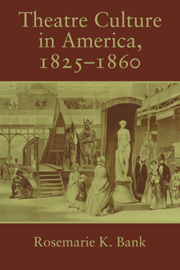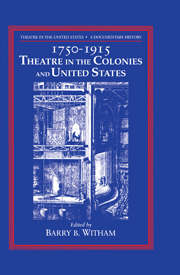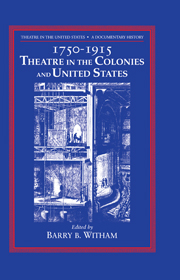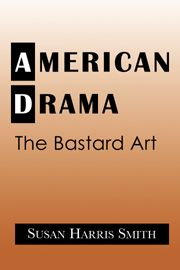Theatre, Culture and Temperance Reform in Nineteenth-Century America
John Frick examines the role of temperance drama in the overall scheme of American nineteenth-century theatre, using examples from mainstream productions and amateur theatricals. Nineteenth-century America witnessed a major movement against alcohol consumption when the temperance cause became one of national concern. As part of the temperance movement, a new genre of theatrical literature and performance developed, professional as well as amateur, to help publicize its beliefs. Frick also compares the American genre to its British counterpart.
- First examination of the temperance movement and its wide-reaching influence on theatre in America
- Also explores its counterparts in temperance theatre in Victorian Britain
- Includes valuable and informative illustrations and appendix
Reviews & endorsements
"Frick continues the incredible run of quality work emanating from the Cambridge series... Essential for all libraries specializing in the history of the American theater and popular culture." Choice
Product details
August 2008Paperback
9780521072205
272 pages
229 × 152 × 16 mm
0.4kg
19 b/w illus.
Available
Table of Contents
- List of figures
- Acknowledgements
- Introduction: A complex causality of neglect
- 1. 'He drank from the poisoned cup': temperance reform in nineteenth-century America
- 2. 'Nine-tenths of all kindness …': literature, the theatre, and the spirit of reform
- 3. 'Every odium within one word': early American temperance drama and British prototypes
- 4. Reform comes to Broadway: temperance on America's mainstream stages
- 5. 'In the halls': Temperance entertainments following the Civil War
- 6. Epilogue: 'Theatrical 'Dry Rot'?': or what price the anti-saloon league?
- Appendix: nineteenth-century temperance plays
- Notes
- Bibliography
- Index.






